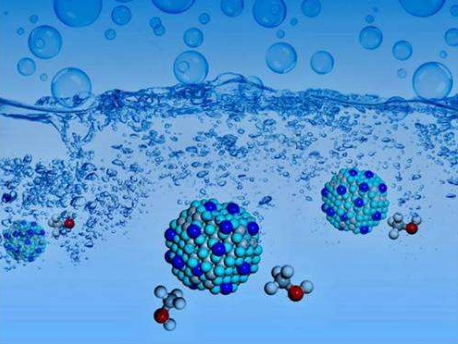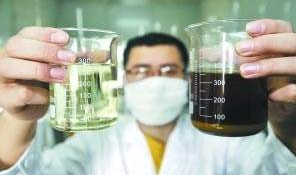On January 20, the reporter learned from the Institute of Chemical Industry of Forest Products, Chinese Academy of Forestry, that the team of academician Jiang Jianchun of the Academy has made important progress in the research of preparing new high-activity molybdenum carbide catalysts for green diesel, oleic acid conversion rate and alkane selectivity Respectively reached 92.7% and 86.7%.

At present, the main catalysts used for the hydrodeoxygenation of fats and oils are molybdenum nickel sulfide and precious metal (platinum and palladium) catalysts. However, the use of hydrogen sulfide in the preparation process of the molybdenum nickel sulfide catalyst causes certain pollution to the environment, and the expensive cost of the noble metal catalyst severely limits its large-scale use.
In recent years, molybdenum carbide catalysts have attracted much attention due to their noble metal-like catalytic properties in hydrodeoxygenation reactions. However, the common problems of low active site dispersion and large size of conventional molybdenum carbide catalysts restrict their use.
In order to solve the above problems, the team of academician Jiang Jianchun used a composite carbon material uniformly doped with nitrogen atoms as the carrier of molybdenum carbide, and applied the catalyst to the lipid hydrodeoxygenation reaction. The mesoporous activated carbon (MC) was polymerized by in-situ polymerization. The surface is wrapped with a layer of polyaniline and then fired in an inert atmosphere to obtain a nitrogen-doped composite carbon material (NMC). Ammonium molybdate was introduced into the above-mentioned NMC material using an equal amount of impregnation method, and a Mo2C/NMC catalyst with highly dispersed and low particle size active sites was prepared through a carbon thermal hydrogen reduction process.
Compared with molybdenum carbide supported mesoporous activated carbon (Mo2C/MC), Mo2C/NMC has higher active site dispersion and lower active site particle size. In the oleic acid hydrodeoxygenation reaction with Mo2C/NMC catalyst, the conversion rate of oleic acid and the selectivity of alkanes in the liquid product were 92.7% and 86.7%, respectively, which were much higher than the Mo2C/MC catalyst (conversion rate 84.8%, select 70.1%). This achievement opens up new ideas for the research of catalysts for the hydrodeoxygenation of oils and fats, and greatly promotes the development of biodiesel.

At present, the total amount of waste oil and fat in my country is about 7 million tons. Liquid fuel prepared by using oil and fat hydrodeoxygenation as a raw material has a chemical composition similar to that of petrochemical diesel and can directly replace diesel products.
Article source: China Chemical Industry News
Original link: https://www.xianjichina.com/special/detail_382904.html
Source: Xianji.com
The copyright belongs to the author. For commercial reprints, please contact the author for authorization. For non-commercial reprints, please indicate the source.